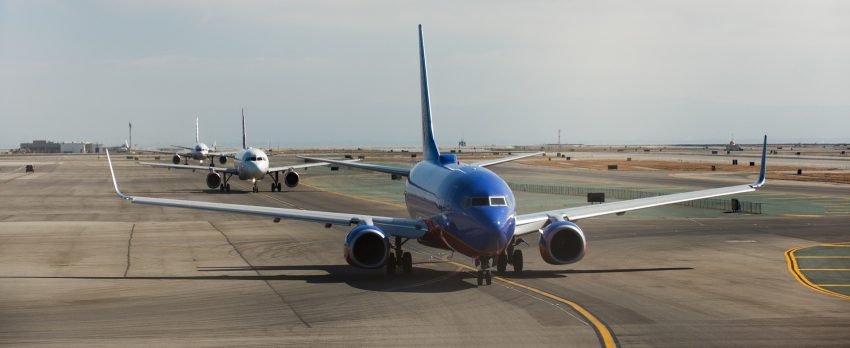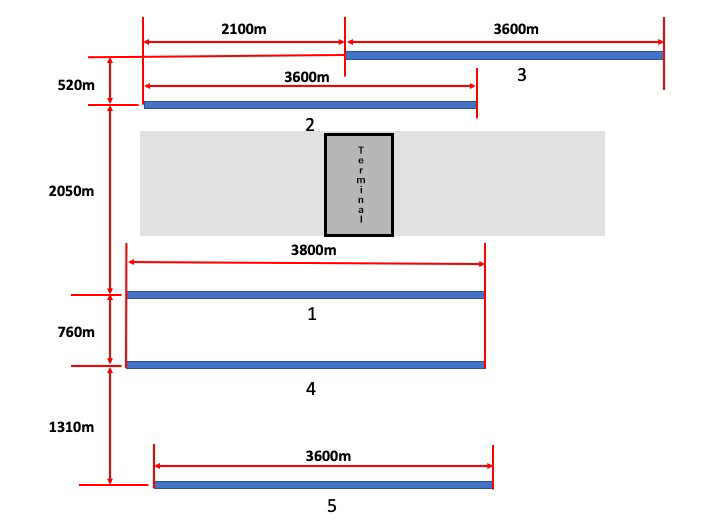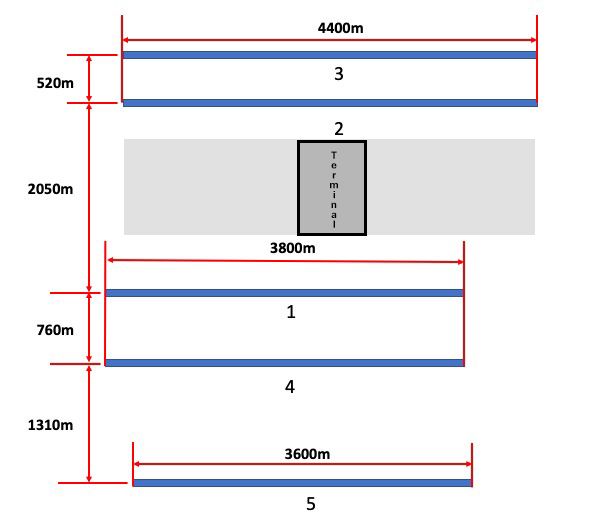When your Airport Master Plan forecasts 130 million passengers annually by 2040, what runway layout meets that demand? Getting the design right is challenging. How can an airport determine the best runway layout for maximum capacity, efficiency and safety when the design options are both conceptual and far from standard? This blog examines another ideal use for fast time simulation: runway layout planning.
[blockquote text=”Using Fast Time Simulation, we could very quickly test the operational viability of the proposed runway layouts” text_color=”#004361″ show_quote_icon=”yes”][vc_separator type=’transparent’ position=’center’ color=” thickness=’5′ up=” down=”]
New Runway Capacity
Handling the 130 million annual passengers forecast in this Chinese airport’s Master Plan would be impossible with the two existing parallel runways. The plan, then, is to expand with two additional runways and possibly a third new runway later, as demand grows.
Both the airport and the Air Traffic Management Bureau of Central South (ATMB-S) that must approve the design have developed several plans for the additional runways and terminal infrastructure. Our challenge was to determine the best runway layout from four different potential designs.
Comparing Runway Layouts
All four design options were very high-level in the early concept stage and focussed only on infrastructure. There was not yet any operations concept. The final design would need to maximise capacity and be efficient in terms of taxi time, delay and maximum throughput KPIs. Using Fast Time Simulation (FTS), we could very quickly test the operational viability of the proposed runway layouts.
Adding to the project’s complexity, two layout designs are also unique concepts. One of them is a plan for two parallel runways staggered by 2100m. To achieve segregated parallel departures and arrivals, in one of the operational directions the inner runway closest to the terminal would need to be used for arrivals. That creates additional safety risk in multiple runway operation as departure traffic must cross the inner arrival runway.
An alternative option is two very long runways of 4400m. The inner runway can be exclusively for departures, but with a displaced threshold of 1200m to still be able to achieve segregated parallel departures/arrivals on runways only 520 metres apart (ICAO Doc 9643 requirements).
Sixteen Fast Simulations
Thanks to our team’s extensive international experience airport planning, airspace design and air traffic management, we built a total of 16 relevant FTS models to test all four high-level designs within a very short timeframe. Some of the concepts hinge on future ATM developments in China (making ATMB-S understandably apprehensive about approving innovative designs too quickly), so the ability to simulate operations was invaluable.
Using FTS allowed us to deliver a detailed report of the operational considerations while looking at both the KPIs and the ATM requirements. (The alternative option above offers greater capacity under independent operation with no increase in taxi distance.) Now it is up to the airport and ATMB-S to evaluate the costs versus benefits and safety aspects to make the final decision on which runway layout to continue developing.
About To70. To70 is one of the world’s leading aviation consultancies, founded in the Netherlands with offices in Europe, Australia, Asia, and Latin America. To70 believes that society’s growing demand for transport and mobility can be met in a safe, efficient, environmentally friendly and economically viable manner. To achieve this, policy and business decisions have to be based on objective information. With our diverse team of specialists and generalists to70 provides pragmatic solutions and expert advice, based on high-quality data-driven analyses. For more information, please refer to www.to70.com.



